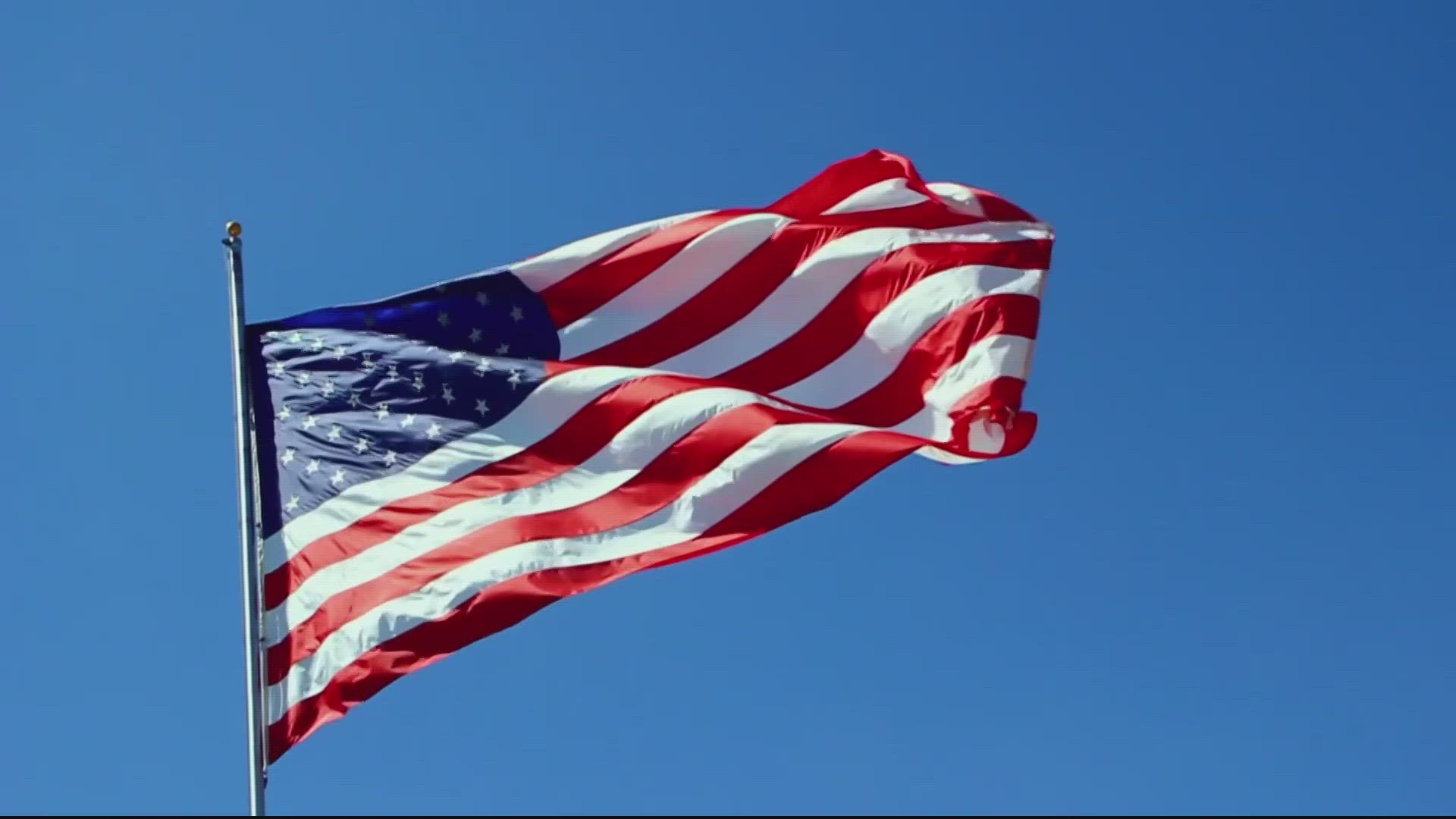Nearly 250 years ago, on June 14, 1777, the Continental Congress approved the design of a national flag. We now celebrate Flag Day on the anniversary of that resolution — but observances certainly didn't start right away.
Here's a quick look at the history of Flag Day, which celebrates the history and symbolism of the American flag.
Why do we celebrate Flag Day?
"Resolved, that the Flag of the thirteen United States shall be thirteen stripes, alternate red and white; that the Union be thirteen stars, white on a blue field, representing a new constellation."
That's the resolution adopted by the Continental Congress on June 14, 1777, in the midst of the Revolutionary War. We don't know for sure who designed this first official flag, but the Library of Congress says most historians believe it was designed by congressman Francis Hopkinson and sewn early on by Philadelphia seamstress Betsy Ross. The new flag first saw battle three months later — according to the Department of Veterans Affairs, the flag was carried in the Battle of Brandywine.
RELATED: Can you wash an American flag?
There have now been more than two dozen official versions of the flag, with the current 50-star flag dating back to 1960 after Hawaii became a state.
When was the first Flag Day?
The VA says sources vary on the first Flag Day observances, with Hartford, Connecticut, claiming the earliest in 1861. School programs on the holiday became widespread in the late 1800s after a New York City school's patriotic ceremony caught education officials' attention.
National recognition of Flag Day came even later, with President Woodrow Wilson issuing the first presidential proclamation establishing a national Flag Day in 1916. The holiday wasn't signed into law until 1949, when Congress approved legislation designating June 14 of each year as Flag Day.
How is Flag Day celebrated?
In the days before the holiday each year, U.S. presidents issue a proclamation designating "National Flag Week" and "calling upon all citizens of the United States to display the flag during that week."
Various communities hold annual Flag Day parades, picnics and other events, though celebrations are far less widespread than those of Independence Day a few weeks later. Flag Day is not one of the U.S.'s 11 federal holidays, meaning banks and government offices remain open.
"On Flag Day and during National Flag Week, we celebrate the enduring strength and promise that the stars and stripes on our flag have always embodied as they fly proudly across our country and around the world," President Joe Biden wrote in his 2023 proclamation on Flag Day.

